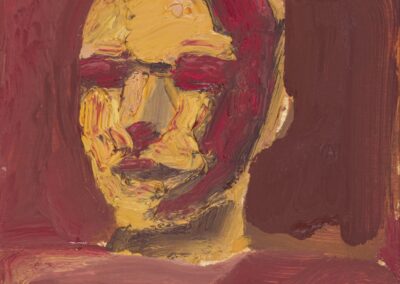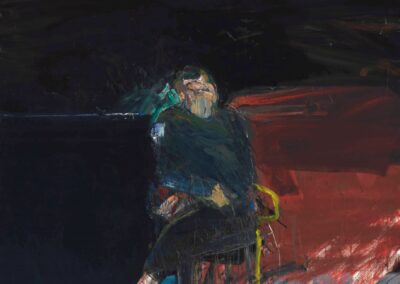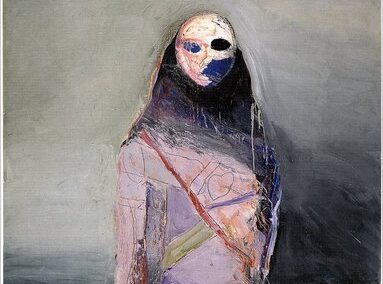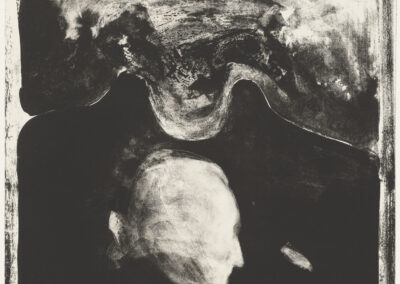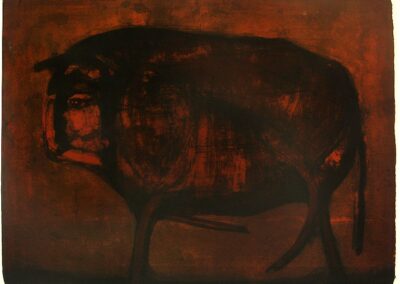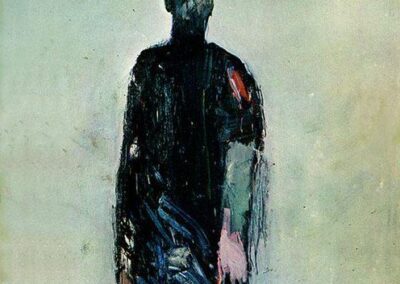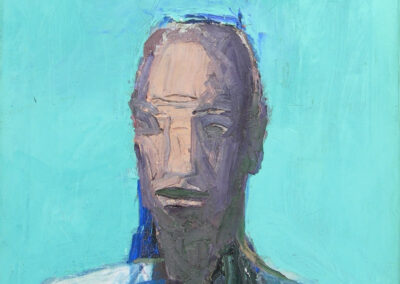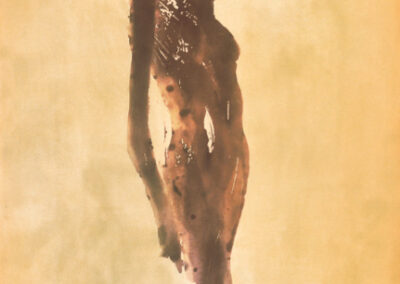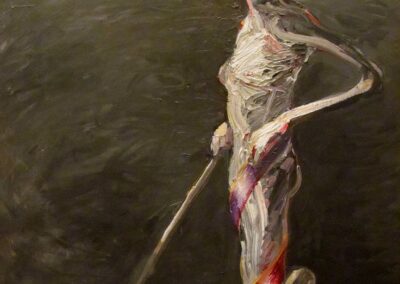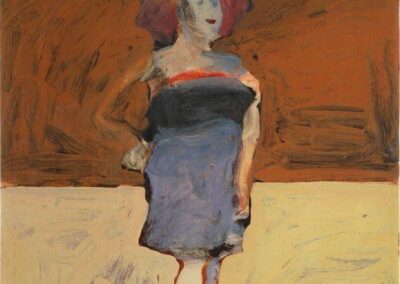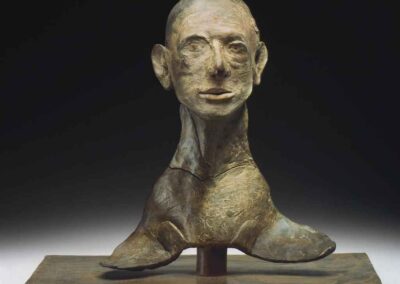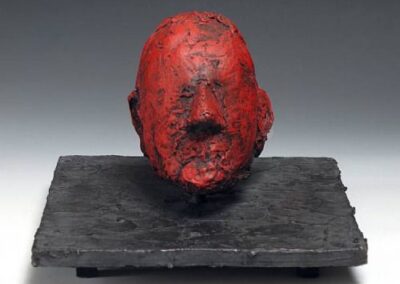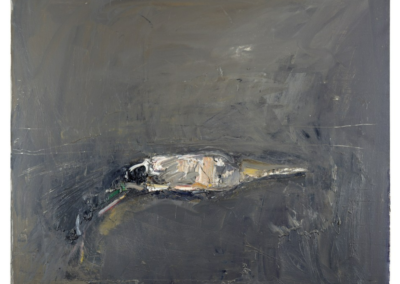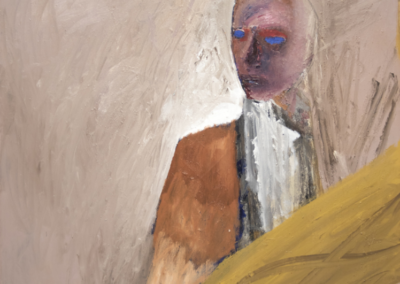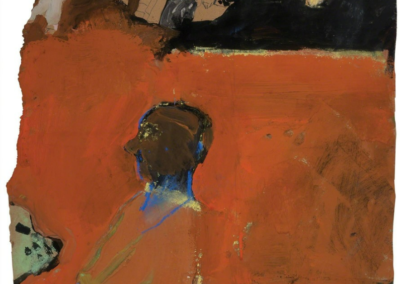Our next Artist You Need To Know is Nathan Oliveira (1928 – 2010).
He was an American painter, printmaker, and sculptor, born in Oakland, California to immigrant Portuguese parents: he worked with a variety of media, subjects, and disciplines over the course of his long career and his role as an educator rivals his artistic achievements.
Often described as a member of the second generation of the Bay Area Figurative Movement, Oliveira considered himself ‘aesthetically independent’ (“I’m not part of the avant-garde. I’m part of the garde that comes afterward, assimilates, consolidates, refines”), amalgamating influences like Willem de Kooning, Alberto Giacometti, Francis Bacon, Oskar Kokoschka, Edvard Munch, and Max Beckmann.
Oliveira studied at the California College of the Arts in Oakland, earning both a BFA and MFA from the school. During this period, he also was taught by German Expressionist Max Beckmann, as part of an eight-week summer course in painting at Mills College. He won a Guggenheim Fellowship in 1958 while still very young and a year later Oliveira was the youngest painter included in the MOMA exhibition New Images of Man alongside major artists (like the aforementioned Francis Bacon and Alberto Giacometti).
“For me, painting is that magical material, that beautiful stuff that was invented, the ground-up pigments in oil which makes it very malleable,” he had said. “It can be manipulated and changed, darkened, lightened, given different hues and colors, so that by manipulating this material somehow I can find that figure I’m looking for, that figure that represents all the issues I’m bringing up and addressing.”
Oliveira exhibited at numerous institutions during his career: these include the Art Gallery of the University of California, Los Angeles (1963); Oakland Museum of California (1973); California State University, Long Beach (1980); San Francisco Museum of Modern Art (1984); California Palace of the Legion of Honor in San Francisco (1997); and the San Jose Museum of Art (2002). He was elected to the American Academy of Arts and Letters in 1994 and has received many other awards, including a Guggenheim Fellowship and two honorary doctorates. In 2000 he was awarded the Distinguished Degree of Commander in The Order of the Infante D. Henrique from the government of Portugal.
His work is collected nationally and is held in the collections of many distinguished institutions, including the Art Institute of Chicago; the Carnegie Institute, Pittsburgh; the Fine Arts Museums of San Francisco; the Los Angeles County Museum of Art; the Metropolitan Museum of Art, New York; the Museum of Modern Art, New York; the National Gallery of Art, Washington, DC; and the San Francisco Museum of Modern Art.
He taught at Stanford University from 1964 to 1996. But Oliveira taught at many other institutions as well, often as a visiting artist. A complete list of his teaching experience can be seen here.
Oliveira was painting right up until his passing at the age of 81 in Palo Alto, CA: in an obituary for the artist and teacher, a friend recounts how Oliveira had over thirty paintings in progress, refusing to stop working despite suffering from pulmonary fibrosis and needing an oxygen tank.
“My concern was to use the language of the abstract expressionists, the gesture of the pigment, and somehow put it together to represent the human figure, to restate classical subjects. I built figures out of the pigment gestures themselves.” (from here)

